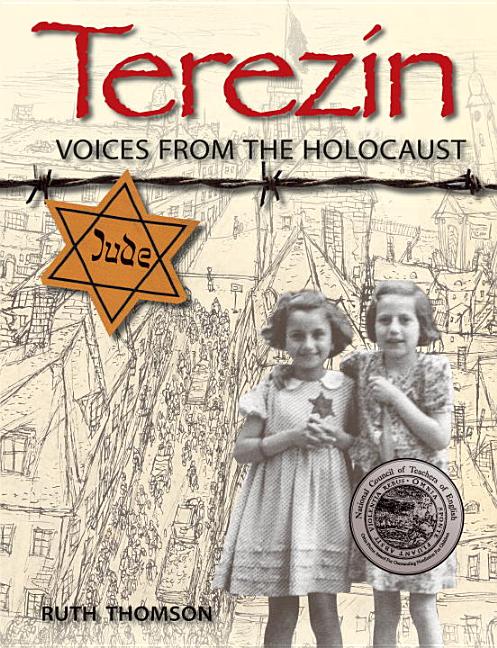Book Descriptions
for Terezín by Ruth Thomson
From Cooperative Children's Book Center (CCBC)
An account of the concentration camp Terezín (known as Theresienstadt under the Nazis) provides a look at life at the camp chronologically during the war years, drawing heavily on primary source material. Many artists were held in Terezín. Small text vignettes describe various aspects of camp history and camp life, while ample captioned photographs of people and artwork created in the camp deepen readers’ understanding. The “official” drawings and paintings the artists were forced to do for the Nazis showed an ideal camp environment. But many of the artists secretly drew and painted scenes that told the real story. The contrast between these is profound, not only in terms of content, but often in terms of a single artist’s stylistic approach. Abundant quotes are part of this visually inviting presentation that also takes a close look at how the Nazis duped the Danish Red Cross into thinking Terezín was a labor camp where prisoners were well cared for. Details about how the Nazis literally staged the Red Cross tour, constructing model housing and parks and feeding selected prisoners in advance so that they could pose along streets designated for the tour, were also the subjects of the artists, who mocked the false reality in revealing works. Ruth Thomson’s compelling history concludes with a timeline, glossary, and sources. (Age 11 and older)
CCBC Choices 2012. © Cooperative Children's Book Center, Univ. of Wisconsin - Madison, 2012. Used with permission.
From the Publisher
Through inmates’ own voices and artwork, Terezín explores the lives of Jewish people in one of the most infamous of the Nazi transit camps.
Between 1941 and 1945, Nazi Germany turned the small town of Terezín, Czechoslovakia, into a ghetto, and then into a transit camp for thousands of Jewish people. It was a "show" camp, where inmates were forced to use their artistic talents to fool the world about the truth of gas chambers and horrific living conditions for imprisoned Jews. Here is their story, told through the firsthand accounts of those who were there. In this accessible, meticulously researched book, Ruth Thomson allows the inmates to speak for themselves through secret diary entries, artwork, and excerpts from memoirs and recordings narrated after the war. Terezín: Voices from the Holocaust is a moving portrait that shows the strength of the human will to endure, to create, and to survive.
Between 1941 and 1945, Nazi Germany turned the small town of Terezín, Czechoslovakia, into a ghetto, and then into a transit camp for thousands of Jewish people. It was a "show" camp, where inmates were forced to use their artistic talents to fool the world about the truth of gas chambers and horrific living conditions for imprisoned Jews. Here is their story, told through the firsthand accounts of those who were there. In this accessible, meticulously researched book, Ruth Thomson allows the inmates to speak for themselves through secret diary entries, artwork, and excerpts from memoirs and recordings narrated after the war. Terezín: Voices from the Holocaust is a moving portrait that shows the strength of the human will to endure, to create, and to survive.
Publisher description retrieved from Google Books.


